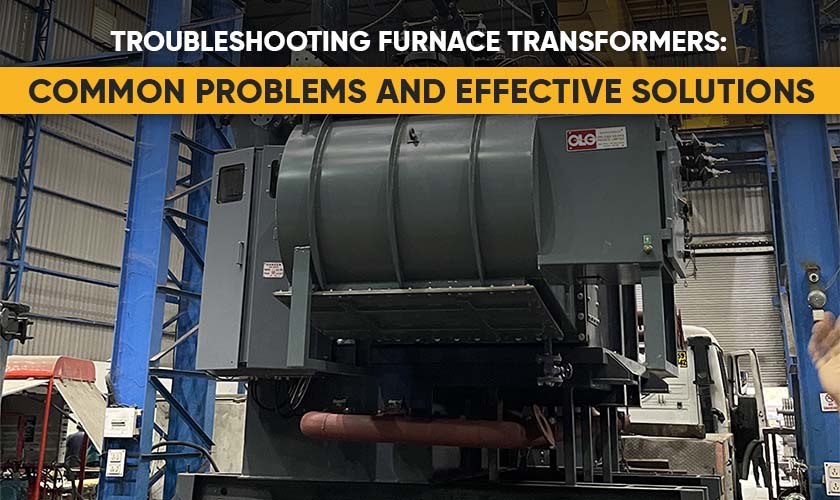Industries, offices, and households depend heavily on uninterrupted electricity to run their
computers, machines, and appliances. In places such as West Bengal, frequent power outages
can disrupt daily activities and cause loss of production, downtimes for businesses, and
disruption at home. Power backup solutions such as inverters are crucial, but many struggle to
grasp the crucial component that helps inverters efficiently - an inverter transformer.
If a power interruption occurs, your inverter will automatically kick into action to provide
power. Have you ever thought about how this seamless power switch takes place? Many
inverters fail or are underperforming because their transformer isn't adequate to handle the
load. Without a functional inverter's transformer, you are at risk of energy surges, battery
drain, and even the destruction of electrical equipment. In the industrial industry, this could
result in delays in production and financial loss.
Understanding the inverter Transformer and the working principle is essential to ensure that
you have a backup generator that operates efficiently. If you're an individual homeowner,
company owner, or a professional player, understanding how an inverter transformer works
will allow you to select the best product and keep it efficient.
What Is an Inverter Transformer?
An Inverter Transformer is a crucial electrical component of the inverter systems. Its primary
purpose is to transform DC (Direct Current) from a battery to AC (Alternating Current), which is
utilized to power equipment and appliances. It also adjusts or decreases voltage levels based on
the demands of the device.
In the absence of an inverter transformer, an inverter is not capable of providing the right
current and voltage to electrical devices during power outages.
Key Components of an Inverter Transformer
Primary Winding: Primary Winding DC output from circuit inverter.Secondary Winding: Delivers AC power at the voltage desired.
Core: Usually made from laminated steel to minimize losses in energy.
Insulation: Assures safety and avoids short circuits.
Taps: Adjust the voltage levels according to the load requirements.
Working Principle of an Inverter Transformer
The basic principle behind an inverter transformer is based on the process of power conversion as well as a transformer of voltage. This is a step-by-step explanation of the process:
DC to AC Conversion:
The inverter draws DC power from batteries.
This DC power can be switched off and on quickly using semiconductor devices (like MOSFETs
and transistors) to produce an oscillating current.
The inverter circuit produces an extremely high-frequency AC signal that is vital for the
transformer's operation.
Voltage Transformation:
The pulsing AC flow is fed to the primary winding of the transformer.
The electromagnetic induction process creates an electric field within the core.
The magnetic field causes an alternating voltage within the secondary winding.
Based on how the winding is distributed, the transformer moves either up or down voltage to
meet the output level.
AC Output Supply:
The stepped-up or stepped-down AC voltage is fed by electrical equipment.
Inverters for home use generally convert 12V DC into 220V AC. Inverters for industrial use can
operate at higher capacity.
Applications of Inverter Transformers
Inverter transformers are utilized in many settings, including:
Security Systems for Residential Use:Assuring continuous power supply to lighting, fans, and other home appliances.
Industrial Power Backup:Providing support to vital equipment in the event of power outages.
Solar Power Systems:Converting DC energy from solar panels into useful AC power.
Uninterruptible Power Supply (UPS):Secures sensitive electronic devices at offices and data centers.
Benefits of Using an Inverter Transformer
Effective Power Conversion:It is a method of converting DC to AC with the least energy loss.
Voltage Regulation:Ensures that appliances get a steady voltage supply.
Reliable Backup:Takes care of heavy loads and power outages.
Safety:Protects against surges in power.
Compatibility:Work with solar, battery, and grid power systems.
Common Problems and Solutions
1. Overheating:
- Solution: Lower load and ensure adequate airflow.
The reason is overloaded or inadequate ventilation.
2. Voltage Fluctuations:
- Cause: Inadequate winding design.
- Solution: Choose a transformer with the right voltage rating.
3. Noise and Vibration:
- Cause: Leap in the winds or cores.
- Solution: Secure components and make sure that they are properly insulated.
Maintenance Tips
- Regular Inspection: Examine for insulation damage, overheating, and loose connections.
- Load Monitoring: Beware of overloading beyond the capacity of your transformer.
- Ventilation: Make sure there is enough airflow to avoid heat buildup.
- Check the level of oil (for transformers with oil in them): Maintain the proper oil levels to ensure insulation and cooling.
Choosing the Right Inverter Transformer
When deciding on an inverter transformer, take into account the following aspects:
- Power Capacity: Measured in kVA or VA depending on the load's needs.
- Input Voltage: Compatibility with the DC output of the battery unit.
- Output Voltage: Suitable for appliances and equipment you plan to be able to use.
- Materials for Winding: Copper windings provide more durability and efficiency than aluminum.
- Cooling Method: Air-cooled for small settings and oil-cooled for industrial use.
Conclusion
The Inverter Transformer is the foundation of every reliable backup power system.
Understanding the working principles of this transformer can help you to ensure a steady
power supply in times of interruptions, reduce energy loss, and secure any electrical devices.
For homes and businesses situated in West Bengal, partnering with reliable transformer makers
such as Makpower Transformers can ensure you have reliable and efficient inverter
transformers specifically designed to meet your specific needs.
For top-quality transformer solutions, get in touch with Makpower Transformers -- your
reliable power supplier located in West Bengal.
FAQs
1. What happens if a transformer overheats?
Overheating can damage the insulation, reduce efficiency, and lead to failures or fire hazards.
2. How do I choose the right cooling method for my transformer?
Consider factors such as transformer size, application, ambient conditions, and budget to select the most suitable cooling method.
3. Are oil-immersed transformers better than dry-type transformers?
Both have their advantages. Oil-immersed transformers offer better cooling for high-capacity systems, while dry-type transformers are safer for indoor and low-capacity applications.
4. How often should cooling systems be maintained?
Regular maintenance schedules depend on the cooling method. Forced cooling systems like ONAF and OFAF require more frequent checks than natural cooling methods.
5. Why is temperature rise testing important?
It ensures the transformer can handle operational loads without exceeding safe temperature limits, maintaining efficiency and longevity.
Looking for reliable transformers with superior cooling systems? Choose Makpowerts for innovative and efficient transformer solutions tailored to your needs. Contact us today to learn more about our products and services!





